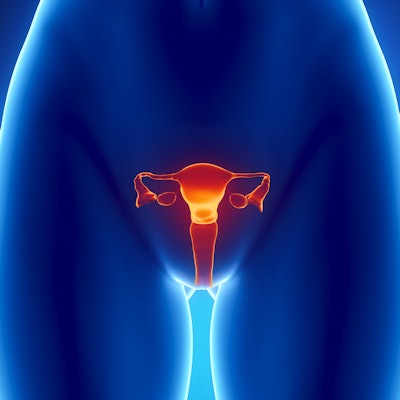
Low-cost testing of vaginal fluid could flag risk factors for preterm birth and could be useful at the point of care in resource-poor settings to reduce life-threatening complications, according to a study of pregnant women in Brazil published on October 22 in mBio, the journal of the American Society for Microbiology.
The study involved noninvasive testing of 340 women in midtrimester pregnancy, with the goal of identifying two important signs of risk for preterm birth: depletion of Lactobacillus bacteria in the vaginal microbiome and short cervical length, defined as 25 mm. It was funded by grants from the Bill & Melinda Gates Foundation, the Brazilian Ministry of Health, and the Brazilian National Research Council.
Testing the levels of tissue inhibitor of metalloproteinase 1 (TIMP-1) and D-lactic acid in vaginal fluid appears to be effective for identifying women at risk of giving birth prematurely and who are vulnerable to associated complications, including death, according to the researchers.
"We identified low-cost point-of-care measures that might be used to identify pregnant women at risk for preterm birth," wrote Steven Witkin, PhD, who heads the ob/gyn immunology and infectious diseases unit at Weill Cornell School of Medicine, and colleagues. "The use of these measures coupled with appropriate preventative or treatment strategies could reduce the incidence of preterm births in poor areas of the world that lack access to more sophisticated diagnostic methods."
A world of difference in patient care
In developed countries, the cervix is monitored with ultrasound during pregnancy, and if it is shortened, women receive treatment -- for example, with progesterone -- to reduce the risk of preterm birth, the researchers noted. In addition, bacterial vaginosis is identified through microscopy or gene amplification tests and treated with antibiotics. But the lack of availability of such methods in some countries results in poor outcomes.
"Complications of preterm birth are the single largest cause of neonatal deaths and account for 35% of the world's 3.1 million neonatal deaths each year," they wrote.
Women enrolled in the study were in the midtrimester stage of pregnancy. Their mean age was 29.1 years, mean gestational age at the time samples were taken was 21.5 weeks, and mean cervical length was 32.9 mm. A range of biomarkers were evaluated with an enzyme-linked immunosorbent assay (ELISA) and RNA sequencing. Cervical length was measured with transvaginal ultrasound.
The researchers found a correlation between the level of D-lactic acid and Lactobacillus species in the vaginal microbiome. They also concluded that TIMP-1 -- when considered along with age and race -- was significantly associated with cervical length as measured by ultrasound.
The results provide a "first step toward the development and use of inexpensive point-of-care diagnostic tests to assess the presence of known risk factors for preterm birth in resource-poor areas," the group concluded.
Follow-up research may assess whether measuring vaginal D-lactic acid and TIMP-1 in the first trimester could reduce the number of preterm births in disadvantaged populations, Witkin and colleagues suggested.



















